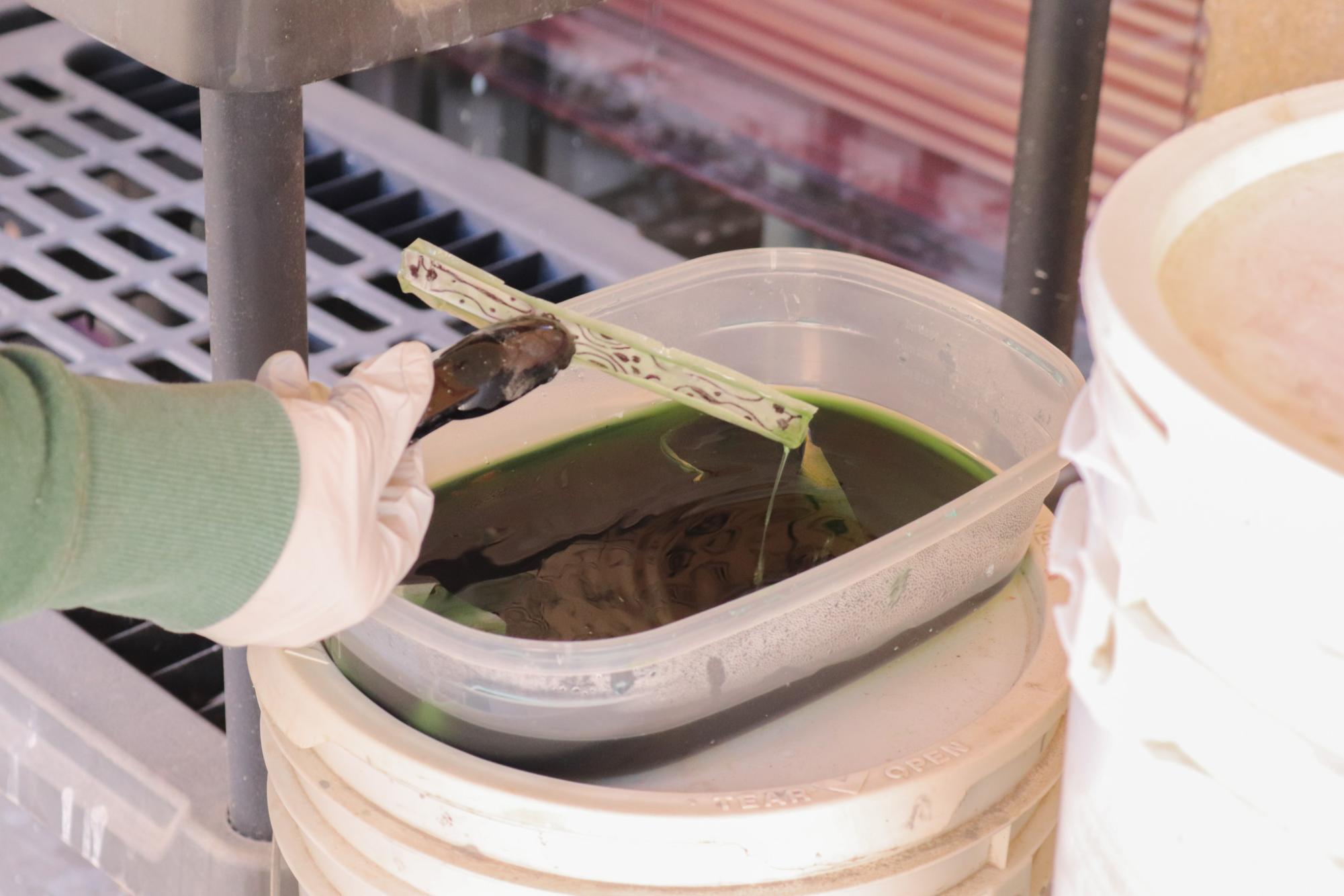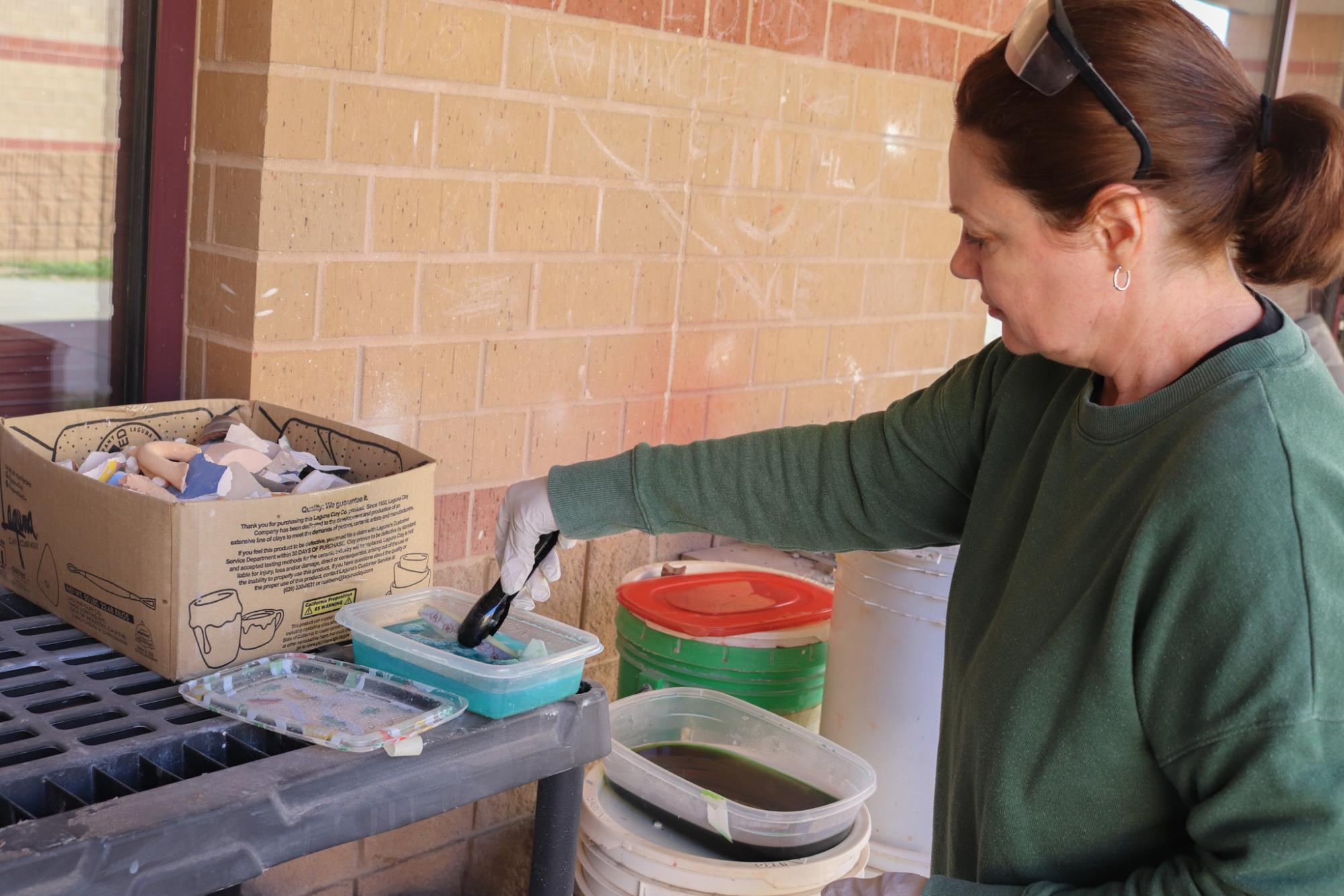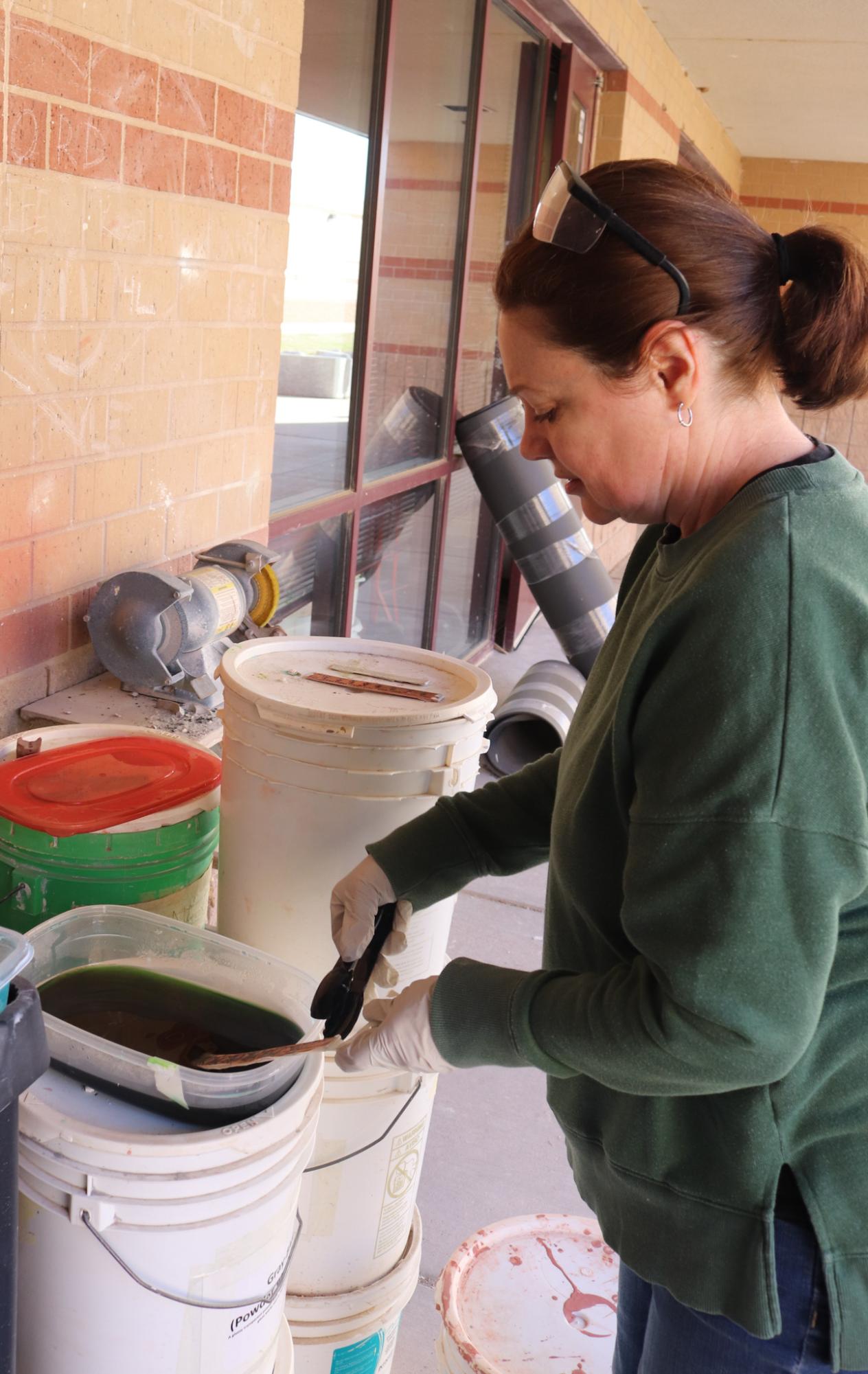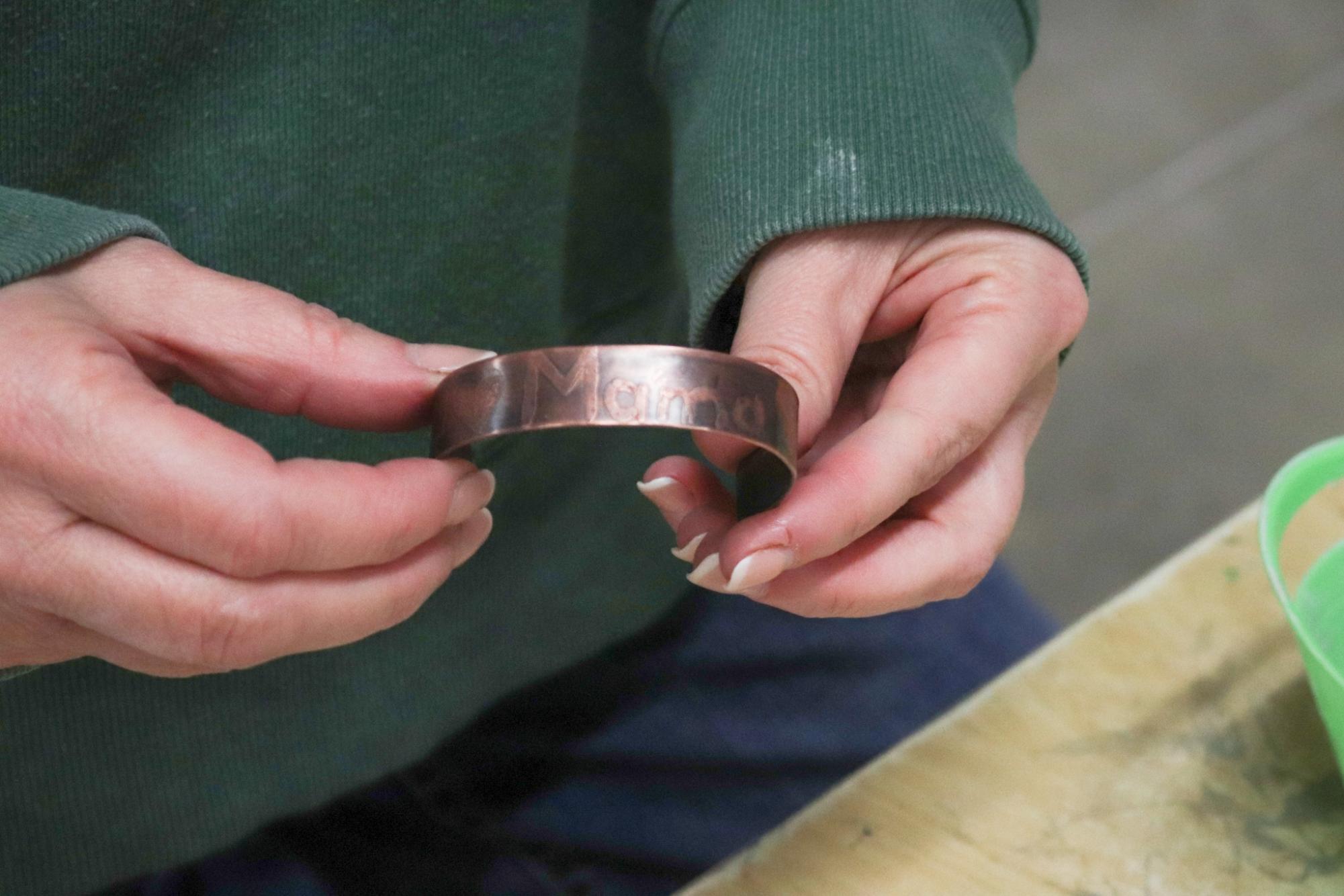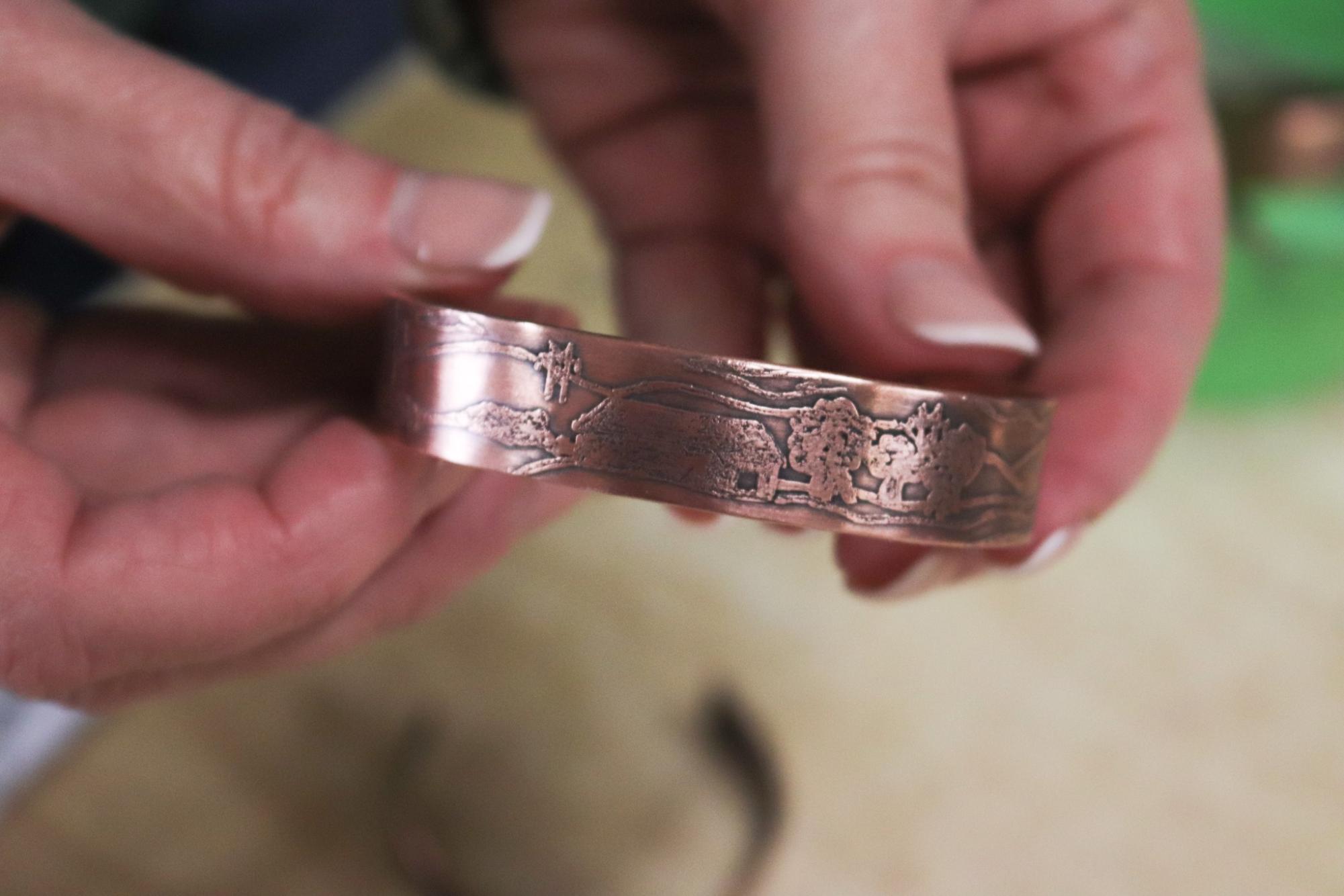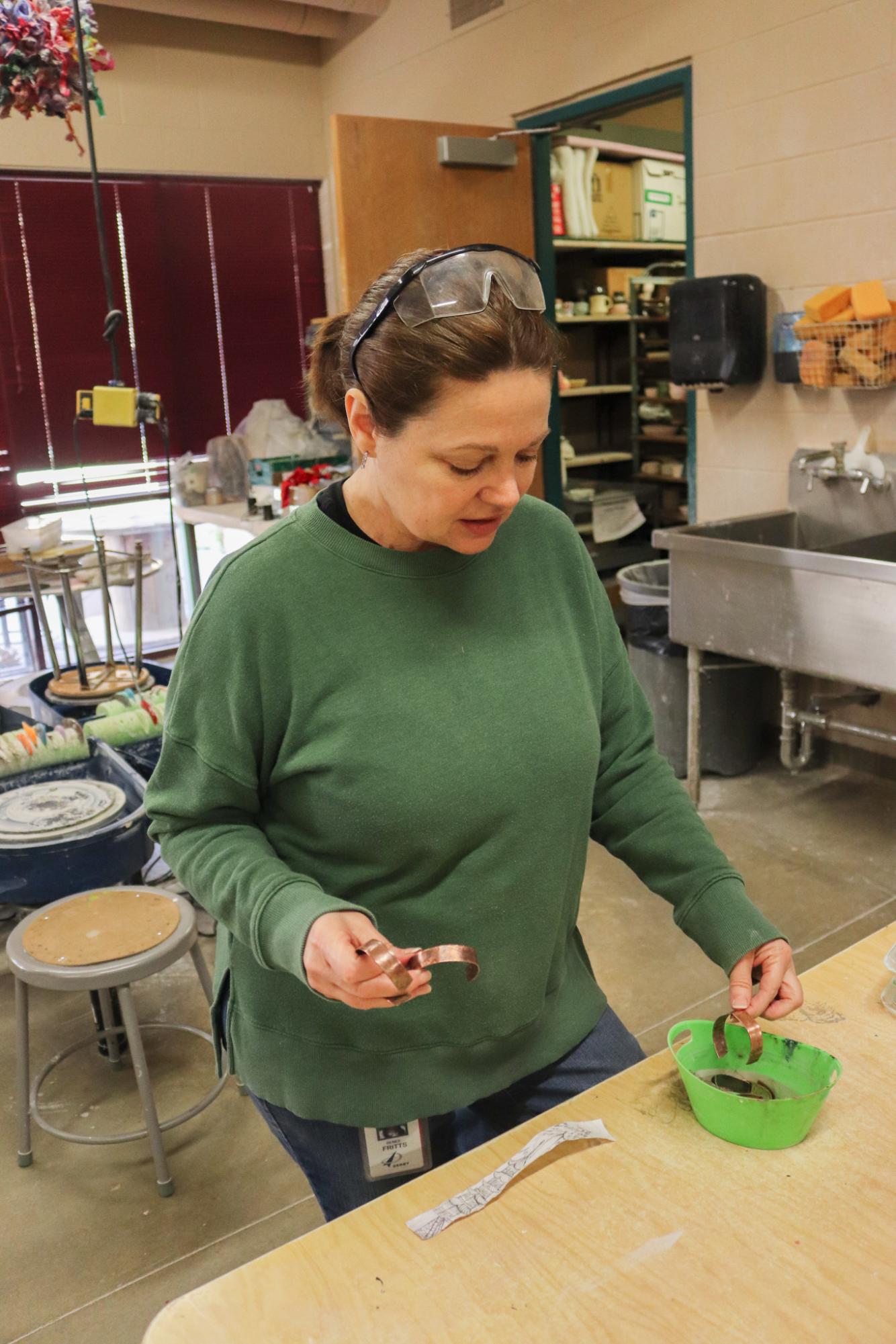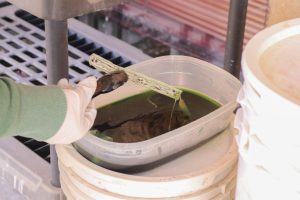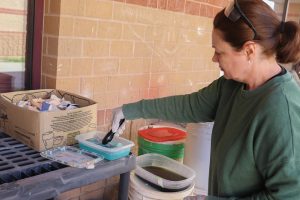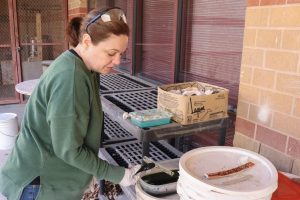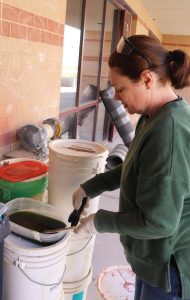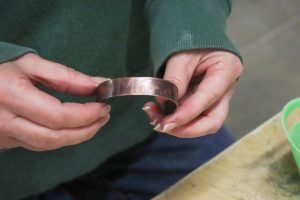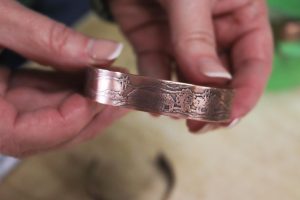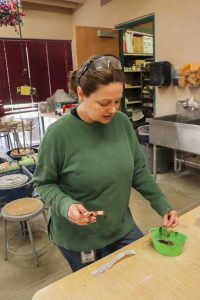Art classes are hard work, with clay being no exception. Clay requires work in and out of the class hours.
Clay teacher Renee Fritts’ class worked on copper bracelets, and during her plan period, Fritts moved the bracelets between solutions.
The bracelets are made with copper tubing that is cut and hammered into a correctly-sized band.
“It was then sanded down, especially around the ends and corners where they were cut and pretty sharp,” Fritts said.
After the copper was ready, the students drew a design on the bands with sharpie.
“This area (the design) would be left raised while the rest of the surface would become recessed creating an etched surface on the band,” Fritts said.
The band was then shaped to the students’ wrist, and placed into a patina solution that would iodize and rust the copper into a greener color.
After rinsing and finishing off the bands, the bracelets are ready to wear. However, Fritts offered a suggestion to those who want to wear theirs routinely.
“A clear coat or wax covering is a good idea to preserve the patina and stop the copper from turning your skin color,” she said. “This doesn’t happen with everyone, it depends on your body chemistry. If you have a lot of sodium and sweat, that sodium is released and reacts with copper creating the tone on your skin.”



